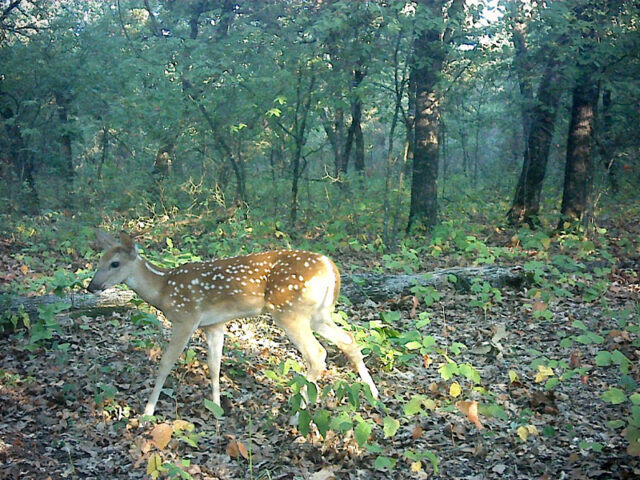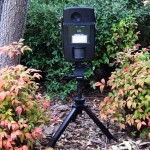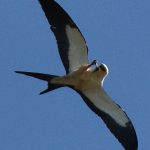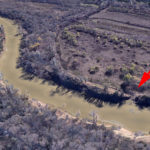DATELINE – 2023 – WISE COUNTY
Every now and again I like to run some really long term trail camera projects. What I’m talking about is setting up cameras in remote locations and letting them run undisturbed for just as long as the batteries can be expected to last. With good quality lithium batteries, that period of time can be a year or longer.
For these kind of projects I typical choose cameras that are due to be retired from service soon–older models that have almost reached the end of their useful lifetime. It’s a nice last hurrah for cameras that are approaching obsolescence.
When cameras are set to run for extended periods of time, the chance that they will record something really special goes way up. Longer and undisturbed runs allow more opportunities for interesting wildlife and behaviors to appear in front of the lens. But, the longer cameras are left in the field, the more vulnerable they become to damage and sometimes even theft. Fortunately, older, near obsolete models are perfect for this application. It’s never fun to lose a camera in the field–for any reason–but it’s much easier to accept the loss of a camera if it was headed to retirement anyways.
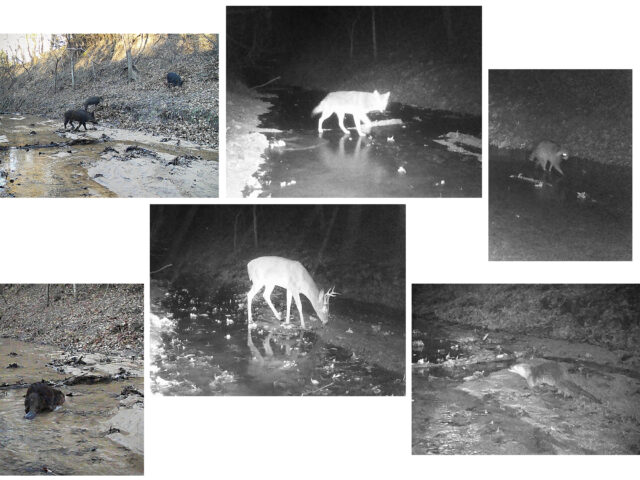
For this particular project I placed a small collection older cameras in several deep woods location on public land in Wise County. I was really excited about the potential of these sets, but just a couple of weeks later I received some concerning news. A notice about a controlled burn taking place on the very parcel of land I had just set my cameras came across my Facebook feed, and the scheduled date for the burn was so soon that it did not allow time for me to retrieve my cameras. Bad news, right? The potential for an unceremonious end for my cameras was very real, and there was nothing I could do about it. Wise County is just a little bit too far away for a spontaneous and unscheduled visit. The trail cameras would just have to ride it out.
A Controlled burn–also known as prescribed burn–is the practice of intentionally setting a fire to change the assemblage of vegetation and decaying material in a landscape. The purpose could be for forest management, ecological restoration, land clearing or wildfire fuel management.
Wikipedia
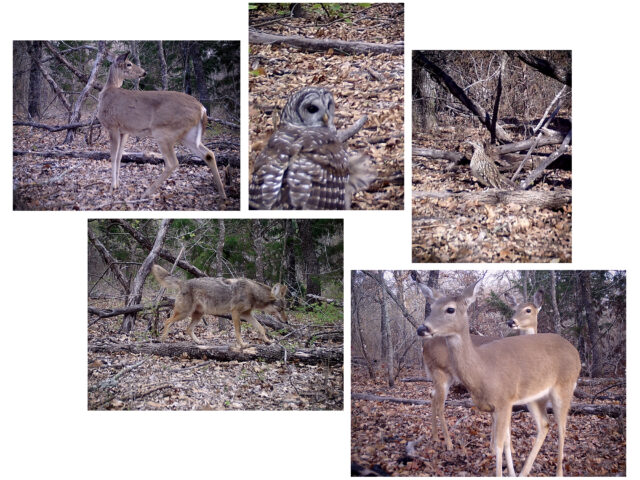
Fortunately, I had set the cameras deep in the woods. I suspected that the controlled burn would be conducted in the grassland areas, and with a little luck the flames would not make their way that far into the forest. I felt fairly certain the cameras would survive the fire, even if some of the flames did make it all the way to where the cameras were setup–still, I couldn’t help being a little concerned.
With no other choice, I made peace with the idea that the project might end up a bust, and then I set out to wait the remaining few months until the planned end date arrived. Roughly a year after I set the cameras, I headed back up to Wise County to retrieve them–all the while hoping of the best!

As I entered the woods and drew closer to where the cameras were installed, I began to notice more and more signs of the recent burn. Charred deadfalls and branches littered the ground. When I finally reached the cameras I found the the entire area had been engulfed in flame. Fortunately, the cameras were intact and undamaged!
When I returned home and began reviewing the pictures, I discovered that it had been an eventful year. There were lots of great wildlife photos recorded. And at one point during deer season, an intrepid and curious deer hunter discovered a couple of the cameras, pulled the SD cards, and reviewed the pictures on his cell phone. Then he did the improbable–he put the memory cards back in the cameras, turned them back on, and left them to record more photographs. Which they did–for a several more weeks before I made it back to the site.
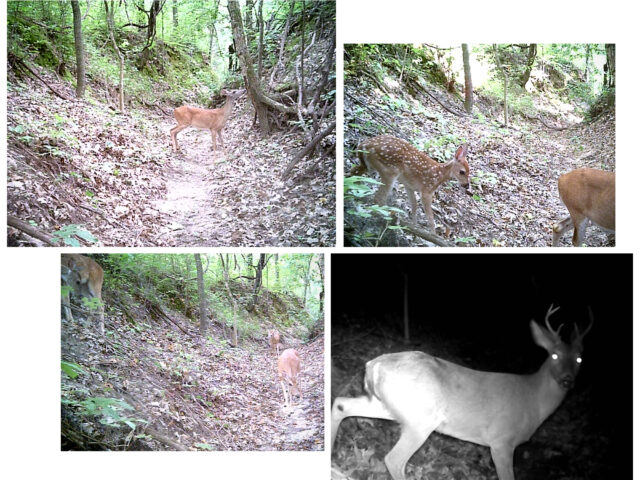
Despite my best efforts to place my trail cameras in discreet locations, they are found on occasion. The usual outcome is theft. But, in this case the guy who found my sets left the cameras just as he found them–and I really appreciate it. I don’t begrudge him his curiosity about the pictures the cameras had recorded, I’m just glad he put things back the way they were. I would not have these pictures otherwise. The pictures were–and are–more important to me than the old trail cameras!
Of all the photographs recorded during this project, I think the ones taken during the controlled burn are perhaps the most interesting. Trail cameras are equipped with heat sensitive motion detectors; these devices are what trigger the cameras when an animal moves into the field of view. Flames licking through an area can trigger trail cameras in the same way.
The controlled burn on this parcel of land started early in the afternoon and lasted until well after dark. The fire triggered my cameras on a regular basis throughout the day, and the progression of the fire through the area was recorded in its entirety.
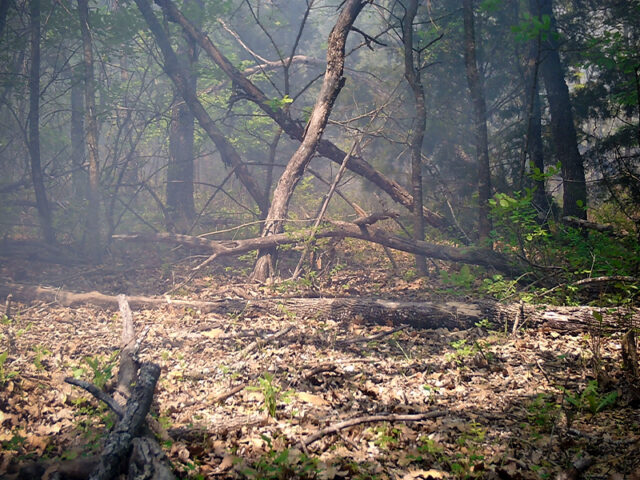
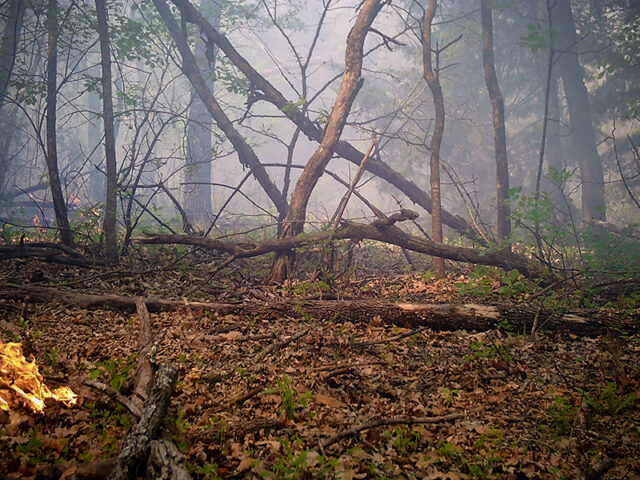

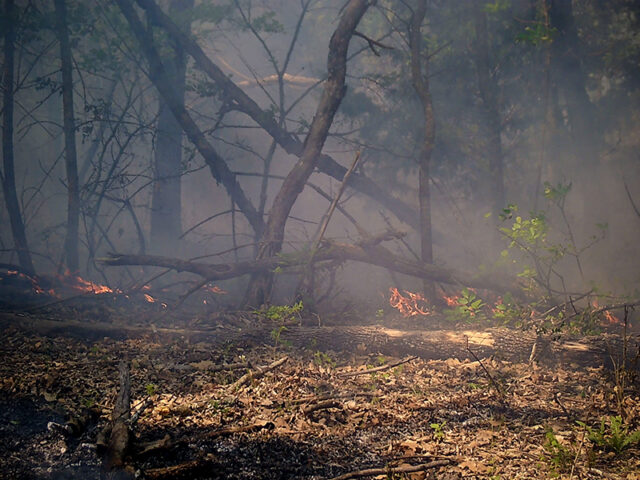
Also recorded was the reaction of some of the animals in the area to the fire as it burn through the forest. In one set of pictures a small herd of deer can be seen pacing back in forth in front of a deep ravine as the flames threatened to box them in. These deer are not yet in a state of panic, but their rising concern is evident in the recorded photos. Eventually, the leader in the group found a way through, and the rest quickly followed behind!
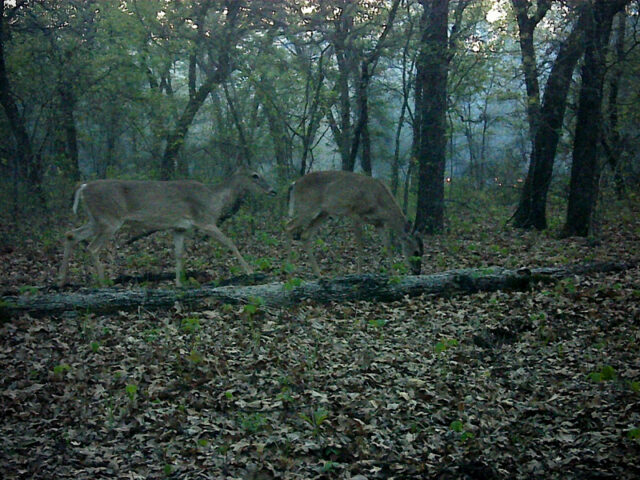
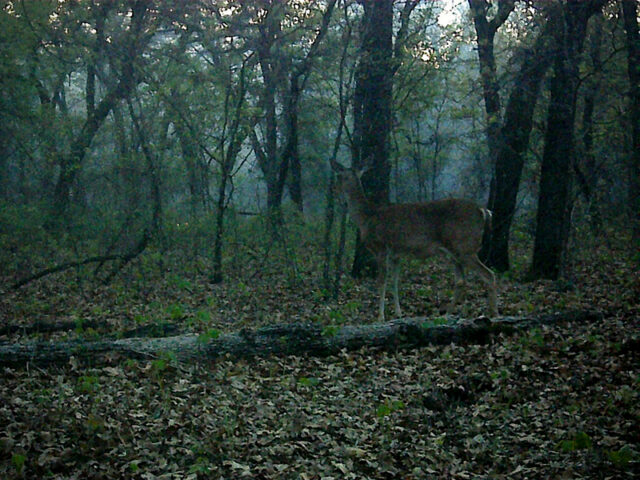

Luckily, the fire never got close to where the deer are
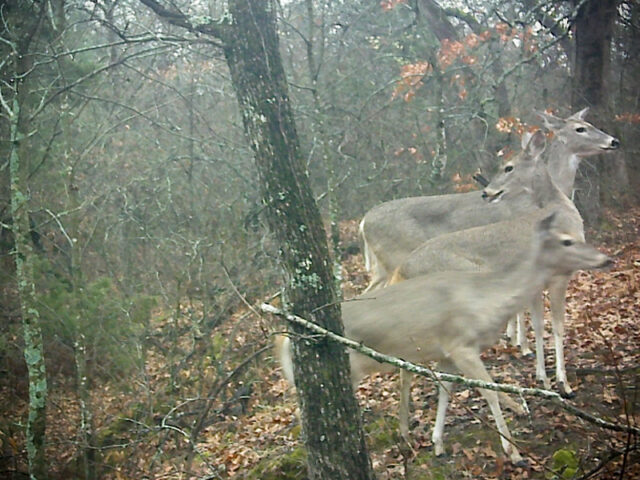
The burn’s aftermath was also well documented by my cameras. Small fires continued to pop up from time to time during the night, and the entire area remained smoky for most of the next day. While reviewing the photos taken immediately after the fire, I quickly noticed a decided uptick in the number of animals in front of the cameras. Raccoons and armadillo in particular, but also more deer and birds. Evidently, the fire did something that improved food accessibility in the area.
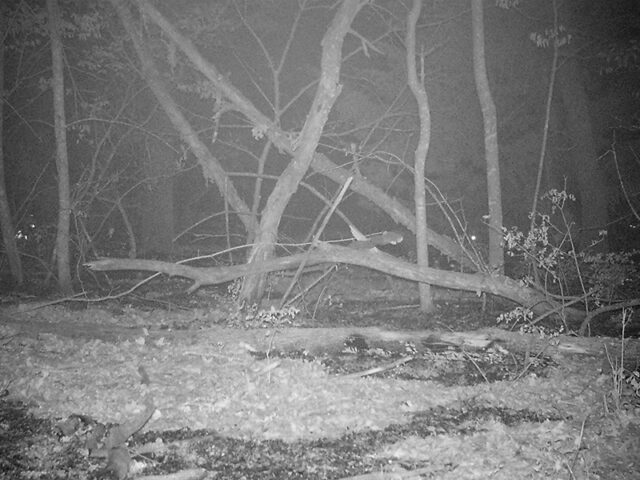
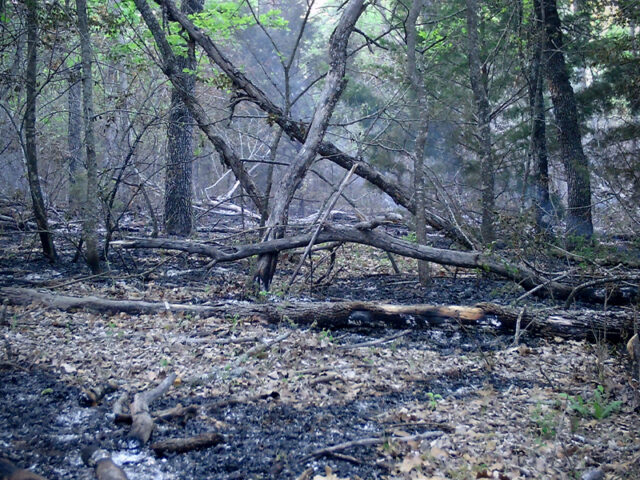

A few weeks later the forest in front of the camera exploded with an abundance of lush green underbrush. The fire had created and enhanced environment for both plants and animals!

of my cameras with the coming of the springtime rains
